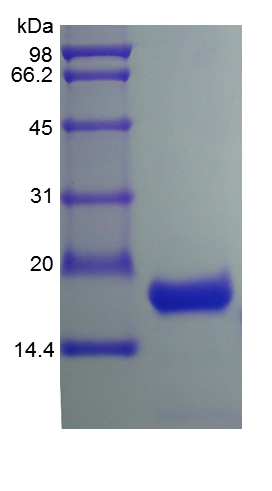Interleukin-10 (IL-10), also known as cytokine synthesis inhibitory factor (CSIF), is the charter member of the IL-10 family of α-helical cytokines that also includes IL-19, IL-20, IL-22, IL-24, and IL-26 AK155. IL-10 is secreted by many activated hematopoietic cell types as well as hepatic stellate cells, keratinocytes, and placental cytotrophoblasts. Whereas human IL-10 is active on mouse cells, mouse IL-10 does not act on human cells. IL-10 is a 178 amino acid molecule that contains two intrachain disulfide bridges and is expressed as a 36 kDa noncovalently associated homodimer. The IL-10 dimer binds to two IL-10 Rα IL-10R1 chains, resulting in recruitment of two IL-10 Rβ IL-10R2 chains and activation of a signaling cascade involving JAK1, TYK2, and STAT3. IL-10Rβ does not bind IL-10 by itself but is required for signal transduction. IL-10 is a critical molecule in the control of viral infections and allergic and autoimmune inflammation. It promotes phagocytic uptake and Th2 responses but suppresses antigen presentation and Th1 proinflammatory responses.
1. Eskdale J, Kube D, Tesch H, et al. 1997. Immunogenetics. 46:120-8.
2. Tan JC, Braun S, Rong H, et al. 1995. J Biol Chem. 270:12906-11.
3. Pestka S, Krause CD, Sarkar D, et al. 2004. Annu Rev Immunol. 22:929-79.

